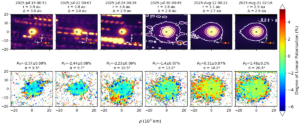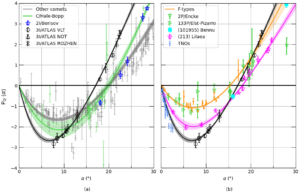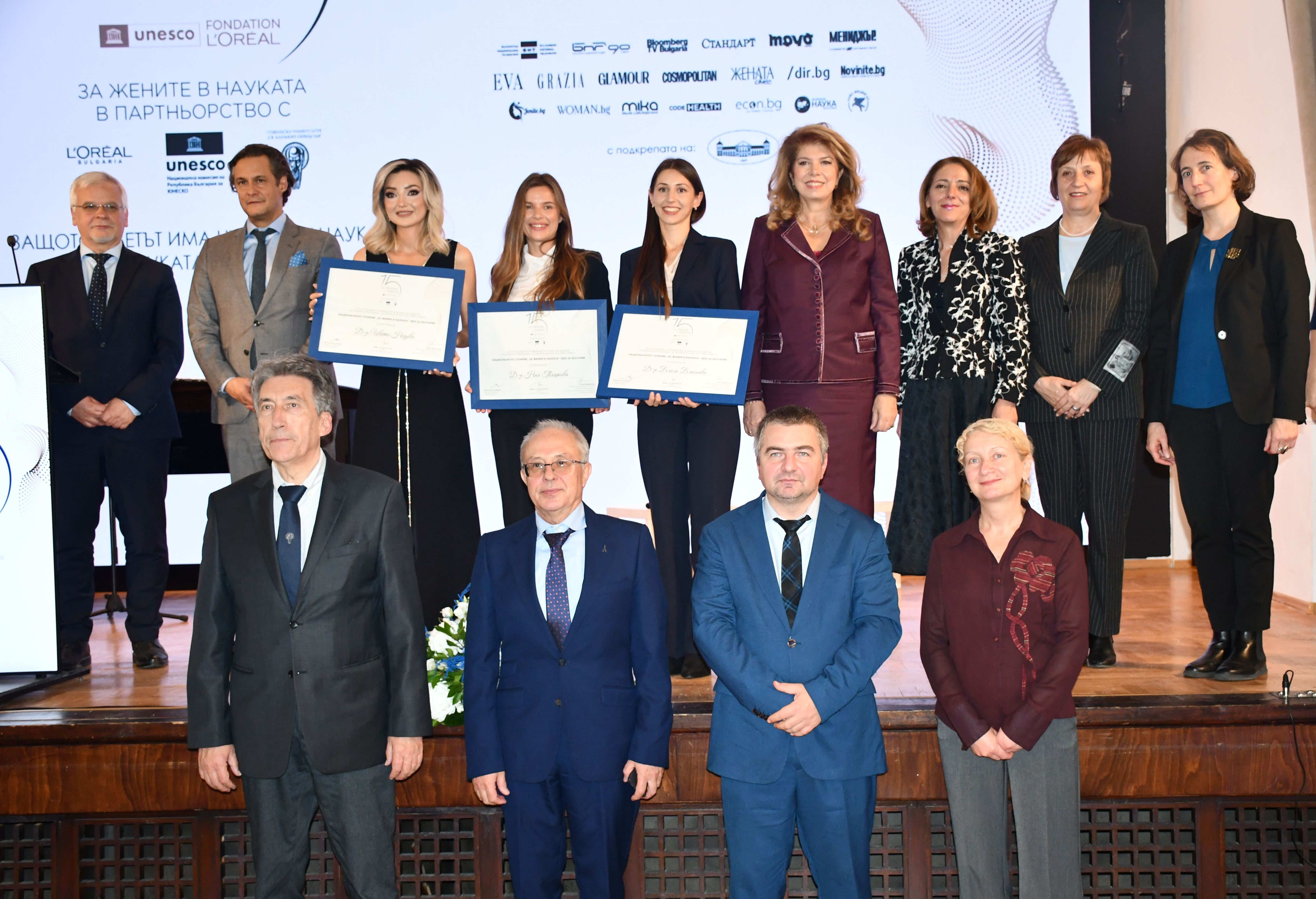Dr. Galin Borisov from the Institute of Astronomy at BAS has participated in the observations of an international team of astronomers with the 2-meter telescope of NAO Rozhen.
Astronomers have discovered that the interstellar comet 3I/ATLAS (C/2025 N1) reflects sunlight in a completely new way. Using some of the most powerful telescopes in the world – the Very Large Telescope (ESO) in Chile, the Nordic Optical Telescope (ORM) in Las Palmas (Spain) and the 2-meter telescope at NAO-Rozhen, an international team has found that the comet’s dust exhibits the largest negative polarization ever observed in a comet or asteroid – a discovery that could change our current ideas about small bodies coming from other star systems.
The results, published in The Astrophysical Journal Letters, show that the dust of 3I/ATLAS is a mixture of dark and icy particles similar to those in distant trans-Neptunian objects. Discovered in 2025, 3I/ATLAS is only the third known interstellar object after 1I/ʻOumuamua and 2I/Borisov.
Researchers believe this comet may represent an entirely new class of interstellar bodies that reveal how planetary systems form and evolve in other parts of the Galaxy. Upcoming observations around and beyond perihelion will confirm these extraordinary results.
Scientists have observed how sunlight reflected off the comet’s dust and ice creates an unusually strong “negative polarization” signal. “The polarization signature of 3I/ATLAS is unlike anything we have seen before,” Dr. Zuri Gray of the University of Helsinki, lead author of the study says. “It shows a deep and narrow negative polarization – stronger than that of any known comet – suggesting that its dust and ice have completely unknown properties.”
A mysterious messenger from another star system?
3I/ATLAS is only the third interstellar object discovered so far – after 1I/ʻOumuamua (2017) and 2I/Borisov (2019). Unlike its predecessors, which had resembled an asteroid and a regular comet, 3I/ATLAS appears to be a completely new type of interstellar object.
Polarimetric data show that light reflected by 3I/ATLAS is highly polarized in a direction parallel to the scattering plane, a phenomenon known as “negative polarization”. The measured value reaches 2.7% at a phase angle of only 7°, with an inverse angle of 17° – a combination not seen in other objects in the Solar system.
Traces of water and unusual dust
Spectroscopic observations by other teams have already shown that 3I/ATLAS has a reddish hue and contains water and carbon dioxide even at large distances from the Sun. The new polarimetric data confirm this and lead to the suggestion that the comet’s dust is a mixture of dark and icy grains similar to those found on distant trans-Neptunian objects.
“This object seems to combine properties of icy bodies from the outer Solar system and of completely alien material from another star,” Dr. Stefano Bagnulo from the Armagh Observatory (UK) explains. “Its characteristics call into question our models for the composition of comet dust.”
A look at galactic diversity
Since interstellar visitors like 3I/ATLAS only pass through our system once, astronomers have limited time to make observations. According to the team, this discovery shows that the diversity of interstellar bodies is much greater than previously thought.
“3I/ATLAS pushes the boundaries of our knowledge of interstellar objects,” Dr. Galin Borisov from the Institute of Astronomy with the National Astronomical Observatory at BAS says. “It may represent an entirely new class of small bodies formed under different conditions in other planetary systems.”
Next steps
The team will continue observations of 3I/ATLAS as it approaches the Sun. It is hoped that the new data will help clarify how its coma evolves and whether the unusual polarization behavior persists over time.
The Bulgarian contribution is supported by project No. KΠ-06-H88/5 (December 2024) “Physical properties and chemical composition of asteroids and comets – a key to deepen knowledge of the origin and evolution of the Solar system”, funded by the Bulgarian National Science Fund. NAO Rozhen is a complex of the National Roadmap for Research Infrastructure 2020-2027 (RACIO project), financially coordinated by the Ministry of Education and Science of the Republic of Bulgaria.
[/fusion_text][/fusion_builder_column][/fusion_builder_row][/fusion_builder_container]







